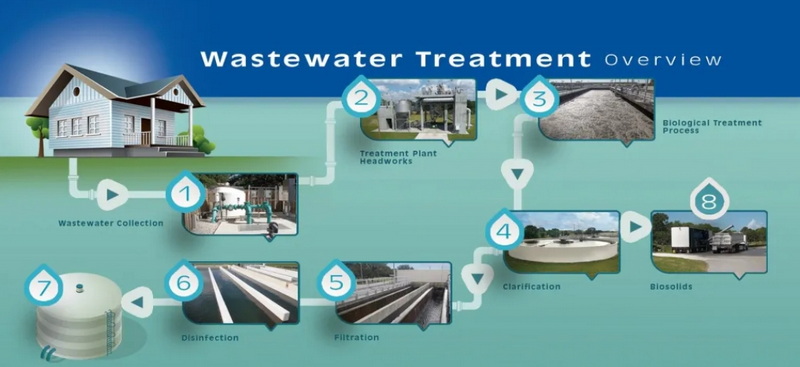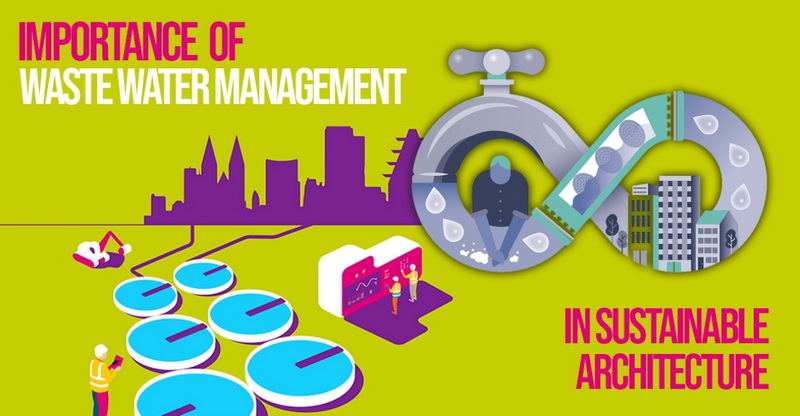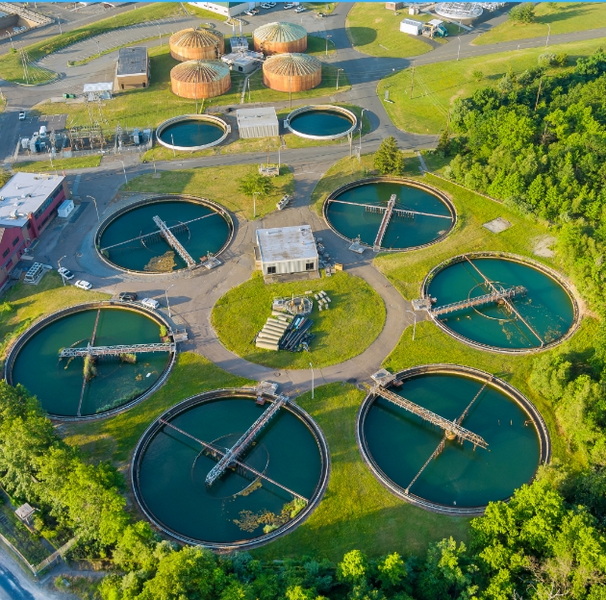Please Choose Your Language
Views: 222 Author: Carie Publish Time: 2025-02-20 Origin: Site








Content Menu
● Understanding Wastewater Management
>> The Wastewater Treatment Process
● Consequences of Non-Compliance
● Technological Innovations in Compliance
● Case Studies Highlighting Compliance Importance
>> Case Study 1: Flint Water Crisis
>> Case Study 2: San Diego's Water Recycling Program
● Public Awareness and Community Engagement
● Future Trends in Wastewater Management Compliance
● Economic Impact of Non-Compliance
● Strategies for Enhancing Compliance
● FAQ
>> 1. What are the main stages of wastewater treatment?
>> 2. Why is compliance important in wastewater management?
>> 3. What are the consequences of non-compliance?
>> 4. How can technology improve compliance?
>> 5. What regulations govern wastewater management?
Wastewater management is a critical aspect of environmental protection and public health. Compliance with regulations governing wastewater treatment is essential for ensuring that wastewater is treated effectively before being discharged into the environment. This article explores the significance of compliance in wastewater management, the processes involved, and the consequences of non-compliance.

Wastewater management involves the collection, treatment, and disposal of wastewater generated from domestic, industrial, and agricultural sources. The primary goal is to remove contaminants and pollutants to protect water quality and public health. Wastewater treatment plants (WWTPs) play a vital role in this process by employing various technologies to treat sewage and other types of wastewater.
The treatment process typically consists of several stages:
1. Preliminary Treatment: This stage removes large debris and solids from the wastewater using screens and grit chambers. This initial step is crucial as it prevents damage to equipment downstream.
2. Primary Treatment: In this phase, the wastewater is allowed to settle in large tanks, where heavier solids sink to the bottom as sludge. This process reduces the organic load on subsequent treatment stages.
3. Secondary Treatment: Biological processes are used to further break down organic matter. This can involve activated sludge systems or biological filters that utilize microorganisms to consume organic pollutants.
4. Tertiary Treatment: Advanced treatment methods may be employed to remove remaining contaminants, including nutrients like nitrogen and phosphorus, which can cause eutrophication in receiving waters.
5. Disinfection: Finally, treated water is disinfected using chlorine or ultraviolet light before it is released into the environment or reused for irrigation or industrial processes.
Compliance with local, national, and international regulations is crucial for effective wastewater management. These regulations are designed to protect public health and the environment by ensuring that wastewater is treated to safe levels before discharge.
- Clean Water Act (CWA): In the United States, this act regulates discharges of pollutants into waters and sets quality standards for surface waters. It mandates permits for discharging facilities, ensuring they meet specific effluent limitations.
- European Union Water Framework Directive: This directive aims to ensure that all water bodies meet good ecological status by 2027, promoting sustainable water use across Europe.
- Local Regulations: Many regions have specific regulations that address local environmental concerns, such as nutrient loading limits or specific pathogen reduction requirements.
Failing to comply with wastewater regulations can lead to severe consequences:
- Environmental Damage: Untreated or poorly treated wastewater can contaminate rivers, lakes, and oceans, harming aquatic ecosystems. For instance, excess nutrients can lead to algal blooms that deplete oxygen levels in water bodies.
- Public Health Risks: Non-compliance can lead to the spread of waterborne diseases caused by pathogens present in untreated sewage. Outbreaks of diseases such as cholera or giardiasis can occur when contaminated water is used for drinking or recreational purposes.
- Legal Repercussions: Facilities may face fines, legal actions, or even shutdowns for failing to meet compliance standards. Regulatory agencies often conduct inspections and monitoring to ensure adherence.
Adhering to compliance standards offers numerous benefits:
- Protection of Public Health: Ensures that communities are not exposed to harmful pollutants that could lead to health issues.
- Environmental Conservation: Helps maintain healthy ecosystems by preventing pollution that could disrupt aquatic habitats.
- Operational Efficiency: Facilities that comply with regulations often operate more efficiently, reducing waste and costs associated with fines or remediation efforts.

Advancements in technology play a significant role in enhancing compliance in wastewater management:
- Real-Time Monitoring Systems: These systems allow for continuous monitoring of water quality parameters such as pH, turbidity, and chemical oxygen demand (COD), ensuring timely responses to any deviations from compliance standards.
- Advanced Treatment Technologies: Innovations such as membrane bioreactors (MBRs) and reverse osmosis (RO) provide higher levels of treatment efficiency by effectively removing contaminants at a molecular level.
- Data Analytics and AI: The integration of artificial intelligence (AI) in data analytics helps predict potential compliance issues by analyzing historical data patterns and operational trends.
The Flint water crisis serves as a stark reminder of the consequences of non-compliance with water quality standards. In 2014, the city switched its water source to the Flint River without adequate treatment measures. As a result, lead leached from aging pipes into the drinking water supply, exposing residents to serious health risks. This incident underscores the importance of strict adherence to compliance regulations in protecting public health.
San Diego has implemented a successful water recycling program that emphasizes compliance with stringent water quality standards. The program treats wastewater through advanced processes like microfiltration and reverse osmosis before it is reused for irrigation and industrial purposes. This initiative not only conserves water but also demonstrates how compliance can lead to innovative solutions for sustainable resource management.
Public awareness plays a vital role in promoting compliance with wastewater management practices. Communities must be informed about the importance of proper sewage disposal and the impact of pollution on local waterways.
Educational programs aimed at schools and community organizations can foster a culture of environmental stewardship. Topics may include:
- The importance of reducing single-use plastics
- Proper disposal methods for household chemicals
- Understanding how individual actions contribute to overall water quality
Engaging local communities in monitoring efforts can enhance compliance initiatives. Citizen science projects allow residents to participate in data collection related to local water quality, fostering a sense of ownership over their environment.
As we look toward the future, several trends are likely to shape compliance in wastewater management:
1. Increased Regulation: Governments worldwide are expected to tighten regulations regarding nutrient discharge limits due to growing concerns over eutrophication.
2. Emerging Contaminants: The detection and regulation of emerging contaminants such as pharmaceuticals and personal care products will become more prevalent as research continues to uncover their effects on ecosystems.
3. Sustainable Practices: There will be a push towards adopting sustainable practices within WWTPs, including energy recovery systems that convert waste into renewable energy sources.
Non-compliance not only has environmental repercussions but also economic implications for municipalities and industries involved in wastewater management:
1. Increased Costs: Facilities found non-compliant may incur substantial costs due to fines imposed by regulatory agencies. Additionally, they may need to invest heavily in retrofitting systems or upgrading technologies to meet standards.
2. Loss of Public Trust: Communities may lose trust in local governments or industries if they perceive negligence regarding environmental protection measures. This loss can lead to decreased property values or even impact local businesses reliant on clean water resources.
3. Insurance Premiums: Companies facing non-compliance issues may see their insurance premiums rise due to increased risk assessments associated with potential liabilities linked to environmental damage.
4. Economic Development Challenges: Areas known for poor environmental practices may struggle attracting new businesses or investments due to concerns about sustainability practices affecting long-term viability.
To enhance compliance within wastewater management systems effectively:
1. Regular Training Programs: Continuous education programs for staff at WWTPs ensure they stay updated on regulatory changes while also reinforcing best practices within operations.
2. Internal Audits: Conducting regular internal audits helps identify potential areas where non-compliance could occur before external inspections take place—allowing facilities time for corrective actions if necessary.
3. Collaboration with Regulatory Agencies: Building strong relationships between WWTP operators and regulatory agencies fosters open communication channels regarding expectations while enabling facilities access resources needed for maintaining compliance effectively.
4. Public Reporting Mechanisms: Implementing transparent reporting mechanisms allows stakeholders—including community members—to understand how well facilities perform against established standards while encouraging accountability among operators.
5. Incentives for Best Practices: Providing financial incentives or recognition programs encourages facilities adopting innovative technologies leading toward improved performance beyond minimum regulatory requirements—ultimately benefiting both operators & communities alike!
In conclusion—compliance remains paramount within every aspect associated with managing our precious freshwater resources! By prioritizing adherence across all levels—from operational staff through community engagement—we collectively contribute toward safeguarding both human health & ecological integrity!
Through ongoing education initiatives combined alongside technological advancements—we pave pathways toward sustainable futures where clean waters thrive!

The main stages include preliminary treatment (removing large debris), primary treatment (settling solids), secondary treatment (biological breakdown), tertiary treatment (advanced removal), and disinfection.
Compliance ensures that wastewater is treated safely before discharge, protecting public health and the environment from pollutants.
Consequences include environmental damage, public health risks from waterborne diseases, and legal repercussions such as fines or facility shutdowns.
Technological innovations like real-time monitoring systems and advanced treatment technologies enhance compliance by providing efficient monitoring and higher treatment levels.
Key regulations include the Clean Water Act in the U.S., the European Union Water Framework Directive, and various local regulations tailored to specific environmental concerns.
This article explores the top Nickel Sulfate Manufacturers and Suppliers in America, highlighting their key products, application areas, and essentials of reliable sourcing. With detailed industry profiles, market trends, future outlooks, and FAQs, it serves as a vital comprehensive resource for businesses seeking high-quality nickel sulfate and dependable partnership.
Choosing the best chemical raw materials for aluminum profiles is **critical to ensuring strength, durability, corrosion resistance, and sustainability** in the final products. The selection impacts not only the mechanical and aesthetic qualities but also influences cost-effectiveness, production ef
In the global industrial landscape, **chemical raw materials for surface treatment** play a critically transformative role in enhancing the durability, functionality, and aesthetics of countless products. Surface treatment chemicals help prevent corrosion, improve adhesion, increase wear resistance,
Aluminum stands out in the materials world due to its combination of light weight, high strength-to-weight ratio, and natural corrosion resistance. Yet, despite its excellent surface passivation, aluminum's vulnerability in aggressive environments, such as marine or industrial atmospheres, necessita
Aluminum alloys have revolutionized modern engineering, offering unmatched versatility, lightness, and strength. But the secret to their remarkable properties lies in the careful selection and combination of raw materials. This comprehensive guide explores the best chemical raw materials for aluminu
Aluminum is a cornerstone of modern manufacturing, renowned for its exceptional strength-to-weight ratio, corrosion resistance, and versatility. However, to realize its full potential in diverse industrial applications, **surface treatment** is essential. Surface treatments enhance al
In modern chemistry and materials engineering, chemical raw materials and electrophoretic materials play crucial but distinct roles. While chemical raw materials refer broadly to the fundamental substances used to create chemicals, polymers, coatings, and various compounds, el
Metal treatment is a foundational process in countless industries, from automotive to aerospace, construction, electronics, and consumer goods. The selection of the right chemical raw materials is paramount; it determines not only the quality, performance, and longevity of the finished product but a
Aluminum profiles are fundamental components across modern industries—from construction and transportation to electronics and advanced manufacturing. The secret to their performance, longevity, and aesthetics lies not just in mec
Incomplete neutralization and descaling of aluminum profiles may be caused by the following factors:1. Process Parameter Issues: Such as insufficient treatment time, inappropriate temperature, or inaccurate solution concentration. If the treatment time is too short, the neutralization and descaling
After aluminum alloy undergoes anodizing treatment, an oxide film is formed that is resistant to oxidation, rust, corrosion, and wear. Furthermore, this oxide film is extremely stable in natural ecological environments, effectively protecting the surface of aluminum alloy products. The outer layer o
This article provides a comprehensive overview of the top sodium hydroxide manufacturers and suppliers in the UK, highlighting their products, specializations, and service features for various industries. It is designed to guide OEMs, resellers, and end-users in making informed choices and ensuring consistent access to high-quality sodium hydroxide. Covering market trends, safety, packaging, and FAQs, the article is an essential resource for anyone in need of sodium hydroxide in the UK market.
This article provides an in-depth overview of the top sodium hydroxide manufacturers and suppliers in Japan. It highlights key companies such as Tosoh Corporation, Shin-Etsu Chemical, Tokuyama Corporation, Sumitomo Chemical, and Kureha Corporation, detailing their production facilities, technologies, and industrial applications. The article also covers the importance of OEM services, environmental initiatives, and future industry trends, offering valuable insights for global businesses seeking reliable chemical partners.
This article provides an in-depth look at the top sodium hydroxide manufacturers and suppliers in South Korea. It covers their product types, industrial applications, technological strengths, quality certifications, environmental practices, and supply chain capabilities. Leading companies like OCI and YOUNG JIN CHEMICAL are highlighted for their innovation and reliability in supplying high-purity caustic soda to global markets.
This comprehensive article highlights the top sodium hydroxide manufacturers and suppliers in Portugal, focusing on companies like Bondalti and Brenntag. It covers production technologies, industrial applications across multiple sectors, environmental and safety practices, and market trends. The article provides valuable insights for businesses seeking reliable sodium hydroxide suppliers in Portugal and includes a detailed FAQ to address common questions.
This article highlights the top sodium hydroxide manufacturers and suppliers in Spain, including Union Group Chemical, Quality Chemicals, and Ercros Vilaseca II. It covers their product range, production processes, industrial applications, and commitment to quality and sustainability. Spain’s chemical industry plays a vital role in supplying high-purity caustic soda for aluminum surface treatment, water treatment, pharmaceuticals, and more, supporting both domestic and global markets.
This comprehensive guide explores the leading sodium hydroxide manufacturers and suppliers in Italy, highlighting their advanced production processes, product forms, and extensive applications across industries. Italian suppliers are renowned for their quality, reliability, and sustainability, making them strategic partners for global buyers seeking high-purity sodium hydroxide solutions.
This comprehensive article explores the top sodium hydroxide manufacturers and suppliers in Russia, including JSC KAUSTIK, Usoliekhimprom, and others. It details their production technologies, industrial applications, quality assurance, environmental policies, and future outlook. The article serves as an essential guide for businesses seeking reliable sodium hydroxide suppliers in Russia.
This article details the top sodium hydroxide manufacturers and suppliers in Germany, highlighting leading companies such as BASF, Evonik, and Chemische Fabrik Kalk. It covers their product offerings, industrial applications, quality control measures, and the advantages of sourcing sodium hydroxide from Germany. The content also includes visual insights and a comprehensive FAQ to guide businesses in selecting reliable sodium hydroxide partners for OEM and industrial use.
This comprehensive article reviews the top sodium hydroxide manufacturers and suppliers in France, including Kuhlmann France, VYNOVA, SAFI, SPI Pharma SAS, Westlake Compound France, and Quadrimex Chemical. It details their production technologies, product forms, and applications across industries such as aluminum surface treatment, water purification, and pharmaceuticals. The article also highlights environmental and safety practices, future market trends, and includes a detailed FAQ section to assist buyers and industry professionals seeking reliable OEM chemical partners.
